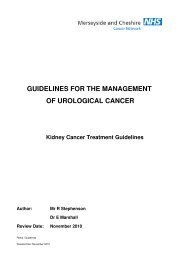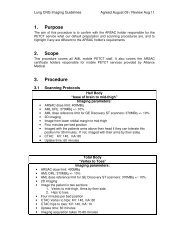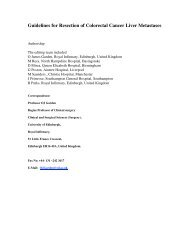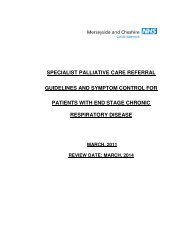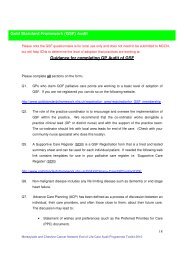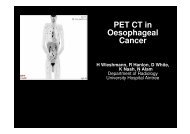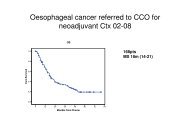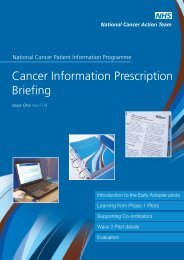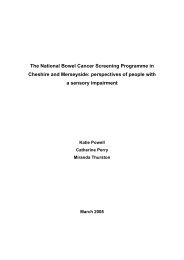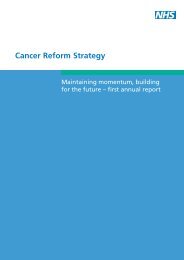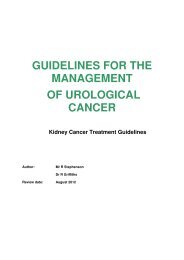Cancer Reform Strategy - NHS Cancer Screening Programmes
Cancer Reform Strategy - NHS Cancer Screening Programmes
Cancer Reform Strategy - NHS Cancer Screening Programmes
- No tags were found...
You also want an ePaper? Increase the reach of your titles
YUMPU automatically turns print PDFs into web optimized ePapers that Google loves.
CHAPTER 10: FUNDING WORLD CLASS CANCER CARE 12310.21 Further details of these costings areincluded in the Impact Assessment publishedalongside this document.10.22 By far the greatest scope for improvedefficiency relates to inpatient care, which is thelargest area of cancer spend. Chapter 7 sets outhow this can be achieved, freeing up resourcesand improving the quality of care that patientsreceive. These efficiency savings will freeresources to ensure that <strong>NHS</strong> treatment serviceskeep pace with rising incidence of cancer incoming years.10.23 Further details on the estimates of costsand savings can be found in the ImpactAssessment, published alongside this strategy.Focusing spending on costeffective interventions10.24 It is important that cancer spending isfocused on cost effective services. Future costpressures can also be mitigated by reallocationtowards more cost effective interventions orincreasing the productivity of existing ones.10.25 Prevention remains the best form oftackling cancer, reducing the human sufferingcaused by the disease and improving outcomes.There is also a strong economic case forinvesting more in prevention, therefore reducingthe pressure on services in the long term.Chapter 2 sets out the measures we are takingto improve the prevention of cancer.10.27 Where possible, the same methodologyfor assessing the impact of services should beapplied across the care pathway. Measuring costeffectiveness allows us to assess the differencein patient outcomes that different interventionsdeliver. Cost effectiveness is usually measured as“costs per life year”, showing the cost of atreatment divided by the additional years it addsto a patient’s life, or “cost per quality adjustedlife year”, which also takes into account anyimpairment or improvement in quality of life thetreatment will cause.10.28 A recent study by the University of York’sCentre for Health Economics 52 has usedDepartment of Health Programme Budgetingdata to generate estimates of the overall linkbetween health expenditure and healthoutcomes in two of the largest health careprogrammes (cancer and circulatory diseases)between 2002 and 2004. This suggests that themix of interventions offered by English <strong>NHS</strong>cancer services compare favourably with thecriteria used by NICE to assess cost-effectiveness.10.29 Good commissioners will want tocontinue to assess the cost effectiveness of allcancer interventions when making decisions onfuture spending. Where possible, they shoulduse sources of national guidance, such as NICE,when doing so.10.26 However, many people will unfortunatelycontinue to develop cancer and will require avariety of forms of treatment for different stagesof disease. Commissioners will therefore need toinvest in a variety of interventions across thecare pathway, ranging from prevention to endof life care.




